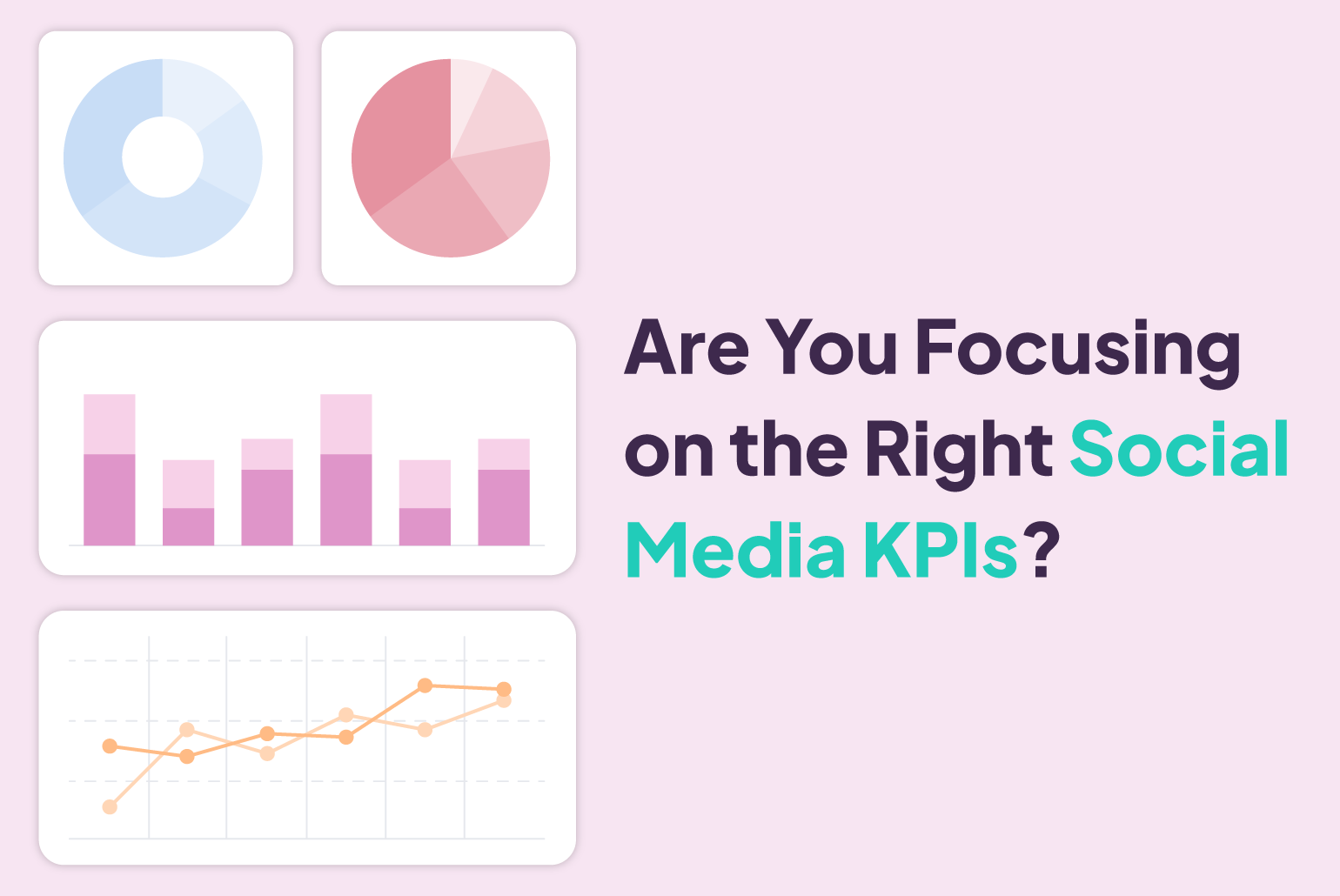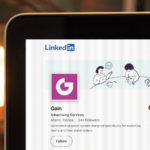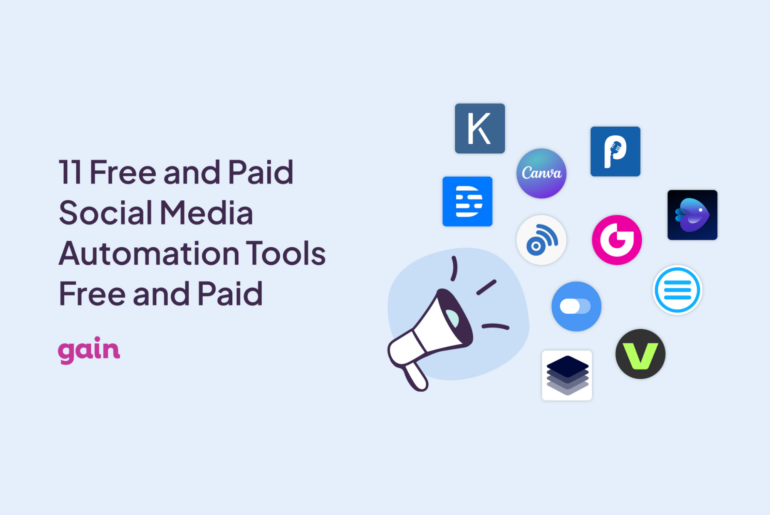Are you tired of pouring your heart and soul into social media campaigns only to be left wondering if they’re actually making a difference? As a marketer, you know that success hinges on generating leads and making sales. But without tracking Social Media KPIs, you’re essentially flying blind.
By monitoring KPIs such as post engagement, click-through, and conversion rates, you can gain valuable insights into how your audience interacts with your content, which platforms are most effective, and how to optimize your social media strategy for better results.
This simple guide will dive into 7 Social Media KPIs you must track and monitor in 2023. From audience growth to post reach, we’ll explore the metrics that matter most and provide actionable tips for improving your social media performance.
What Are Social Media KPIs?
Scientifically speaking, social media key performance indicators (KPIs) are metrics you use to measure the effectiveness of your social media campaigns and track progress over time.
Humanly speaking, social media KPIs are like the rearview mirror of your social media strategy. They help you see where you’ve been and give you the perspective to move forward.
Furthermore, tracking your socials’ KPIs allows you to analyze past performance, identify patterns and trends, and adjust your strategy for better results.
KPIs come in different shapes and forms, from follower growth to click-through rates. However, each business decides on the goals of its social media campaigns and what metrics it’ll use to measure success.
Why Should You Track Social Media KPIs?
Don’t just follow the crowd; ask yourself: why is your business on social media?
If your answer is simply “because everyone else is doing it,” it’s time to rethink your strategy.
According to HubSpot, social media is the top channel for marketing and growing your business. So, here are six reasons why you should monitor your social media metrics:
- Measure the success of your campaigns
- Improve content strategy
- Increase conversions
- Identify the biggest sources of traffic to your website
- Protect brand reputation by tracking sentiment analysis
- Benchmark against industry standards.
Examples of Social Media KPIs and Metrics
Each social media platform has its own specific metrics. Yet, we can group them under these three umbrella categories.
1. Reach Metrics
Reach metrics are a set of quantitative measures that help you determine the total number of unique users exposed to your content or ad on social media.
By tracking reach, you can estimate the size of your potential audience and adjust your content strategy to reach more people. Reach metrics include impressions, visibility percentage, and the number of followers, all of which are crucial in shaping your social media strategy.
However, a high reach doesn’t always mean success. If you’re not reaching the right audience or failing to engage with them, then it’s all for naught. So, always prioritize reaching the right people and creating engaging content consistently.
2. Engagement Metrics
Engagement metrics can help you measure how well your content resonates with your audience. Are they liking your content and leaving comments? Do they click on links to find out more about your products or services?
The most popular engagement KIPs are likes, comments, shares, mentions, and clicks. So, the more of these you get, the more connected your audience is with your brand.
3. Conversion Rates
The ultimate metric that determines the effectiveness of your social media marketing is the conversion rate. Conversion metrics in social media refer to the actions taken by users on a brand’s social media channels that result in a desired outcome, such as a sale or lead.
By tracking conversion KPIs such as click-through rate (CTR), conversion rate, and cost per conversion, marketers can gain insights into the success of their campaigns, identify areas for improvement, and adjust their strategy to maximize ROI.
7 Social Media KPIs You Should Be Watching Closely
1. Follower Growth Rate
Followers are like the barometer of your social media game—not the most important, but still pretty handy.
Think of it this way: if your follower count is rising, your content is probably hitting the mark. But if your follower count is flatlining or, worse, taking a nosedive, then you might want to reevaluate your approach.
2. Reach
Much critical is reach which can be either organic or paid. It measures the total number of unique users who saw your content. So, if 1000 users saw your Facebook post, your reach is 1000.
What’s the practical benefit of looking at reach metrics? It’s relatively simple! If your reach is high but your conversions are low, your content isn’t doing its job. But if it’s the opposite and you see success, keep up the good work!
3. Impressions
Impressions refer to the total number of times your content has been viewed on social media, regardless of whether it was seen by unique individuals or not. Tracking impressions can help you understand how frequently your content is viewed and how often it’s shown to the same individuals.
A high number of impressions means your content is being seen and shared by a broad audience, which is like music to any marketer’s ears. But if your content barely makes a sound, it might be time to adjust your strategy or targeting.
4. Post Engagements
Post engagement is a term used to describe the likes, comments, and shares that your social posts receive. The more of each you get, the merrier.
Plus, it’s a crucial factor in algorithms that decide what content users see. So, the more engagement you get, the more your posts will get out there and be seen.
Pro Tip: end your posts with a question to get people talking, and don’t forget to join the conversation.
5. Saves
The whole point of being on social media is to provide value to your audience. And the best indicator of value is the ‘save’ button.
A high number of saves means your content is striking a chord with your audience, providing information or inspiration they want to keep on hand.
6. Click-through Rate
CTR measures the number of viewers who click on a social post, ad, or content to read more or perform any other action. To calculate CTR, divide the total clicks by impressions and multiply by 100.
It’s important to note that different industries have varying CTR rates. For instance, the average CTR rate for the travel industry is 9.19%, while for arts and entertainment, it stands at 11.43%.
While a high CTR can indicate effective traffic generation to your owned web properties, it does not necessarily translate to desired outcomes like conversions. Hence, it’s crucial to track other metrics like engagement rate and conversion rate to assess the overall success of your social content strategy.
7. Social Referral Traffic
This KPI is simply the number of people who visit your website by clicking on links from social media channels. By tracking social referral traffic, you can identify which social media channels are most effective at driving traffic to your website.
If your website has high social referral traffic, it means that your brand is highly visible on social media. This also indicates to search engines like Google that your content is relevant and authoritative, resulting in improved search rankings for your website.
Ways and Tools For Tracking Social Media Metrics
We’ve blabbered on about social metrics, but where do you go to scavenge for the data gold in the first place? You’ve got some options!
Native Platforms
The easiest way to keep tabs on your social media data is by using native platforms. These include Meta Business Suite (Facebook + Instagram), TikTok Analytics, Twitter Analytics, and LinkedIn Analytics.
While these platforms are handy for delving into different metrics, they can be a hassle, especially if juggling multiple social media channels. Switching back and forth between different analytics tools can eat up a ton of your precious time.
Google Analytics
Do you remember the social referral traffic metric we talked about earlier? You can easily track it on your trusty Google Analytics Console.
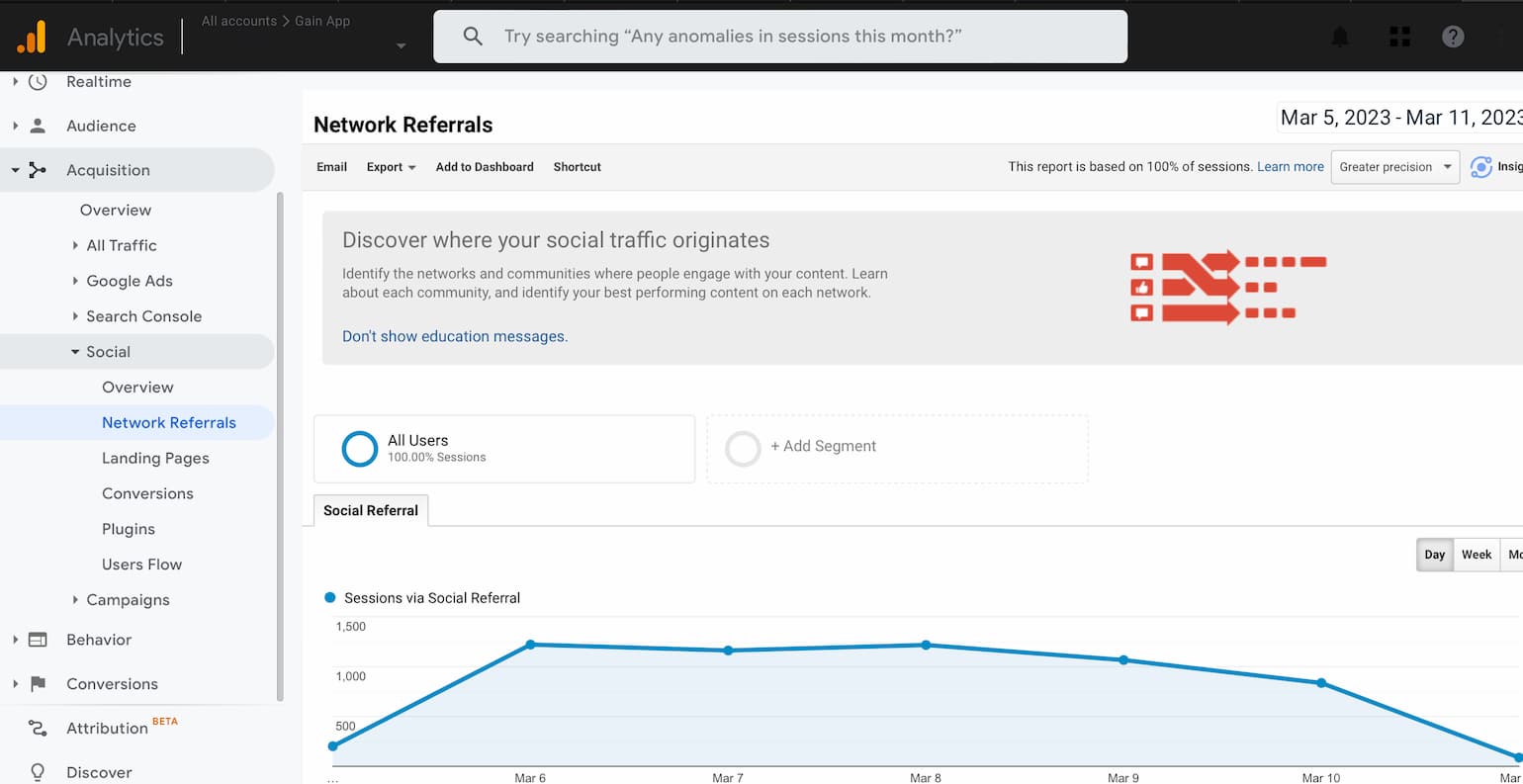
All you gotta do is hit up Acquisition > Social > Network Referrals and start monitoring which social media channels are pulling their weight and driving the most traffic to your website.
Rival IQ
If you’re looking for a more streamlined approach to tracking all your social media KPIs on one platform, you might want to consider Rival IQ.
Rival IQ is a nifty little tool that not only consolidates all your analytics onto one platform but also lets you perform some seriously cool operations, including:
- Competitive social media and SEO benchmarking
- Private social media measurement
- Social listening and search
- Influencer tracking
- Customizable reporting.
Gain
Gain is our social media tool that automates team collaboration and client approvals, helping you produce and distribute social media content for your marketing clients at scale.
It also offers an engagement metric tracking feature—an invaluable resource for any business looking to maximize its social media impact. You can track KPIs such as likes, comments, engagement, impressions, reach, saves, and many more!
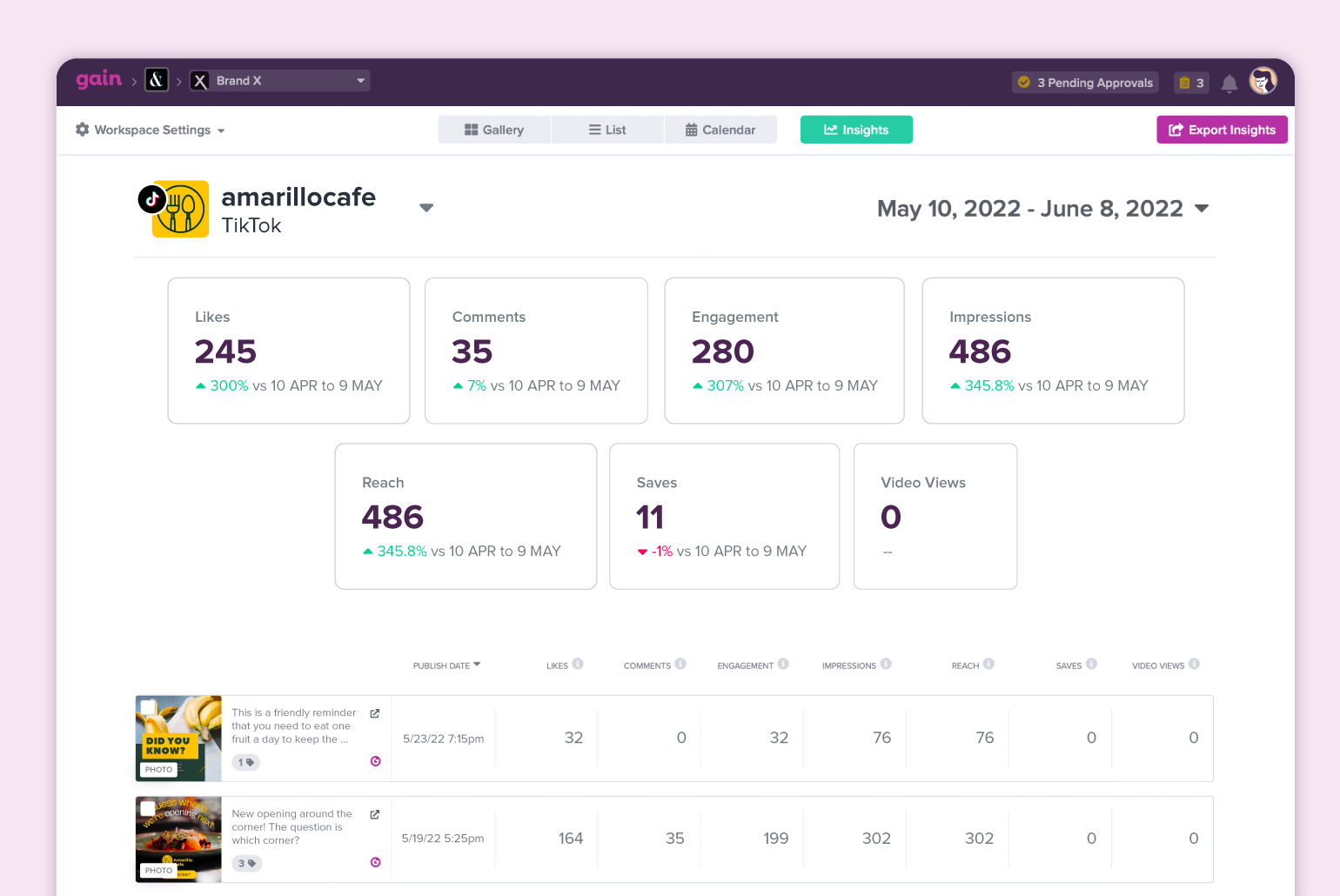
As a bonus, all metrics are accessible within a single, user-friendly platform. That means you can easily optimize, strategize, and even recycle your top-performing posts.
Hop on an interactive tour to explore all of Gain’s features!
How to Decide Which Social KPIs to Track?
Choosing which metrics to track can be tricky. However, it solely depends on the marketing goals you set and the social media platforms you plan to use.
If you’re just starting, SEMRush compiled a handy list of basic metrics for each social media channel to help you get going. From there, the sky’s the limit—keep adding more metrics to unlock the true power of social media analytics.
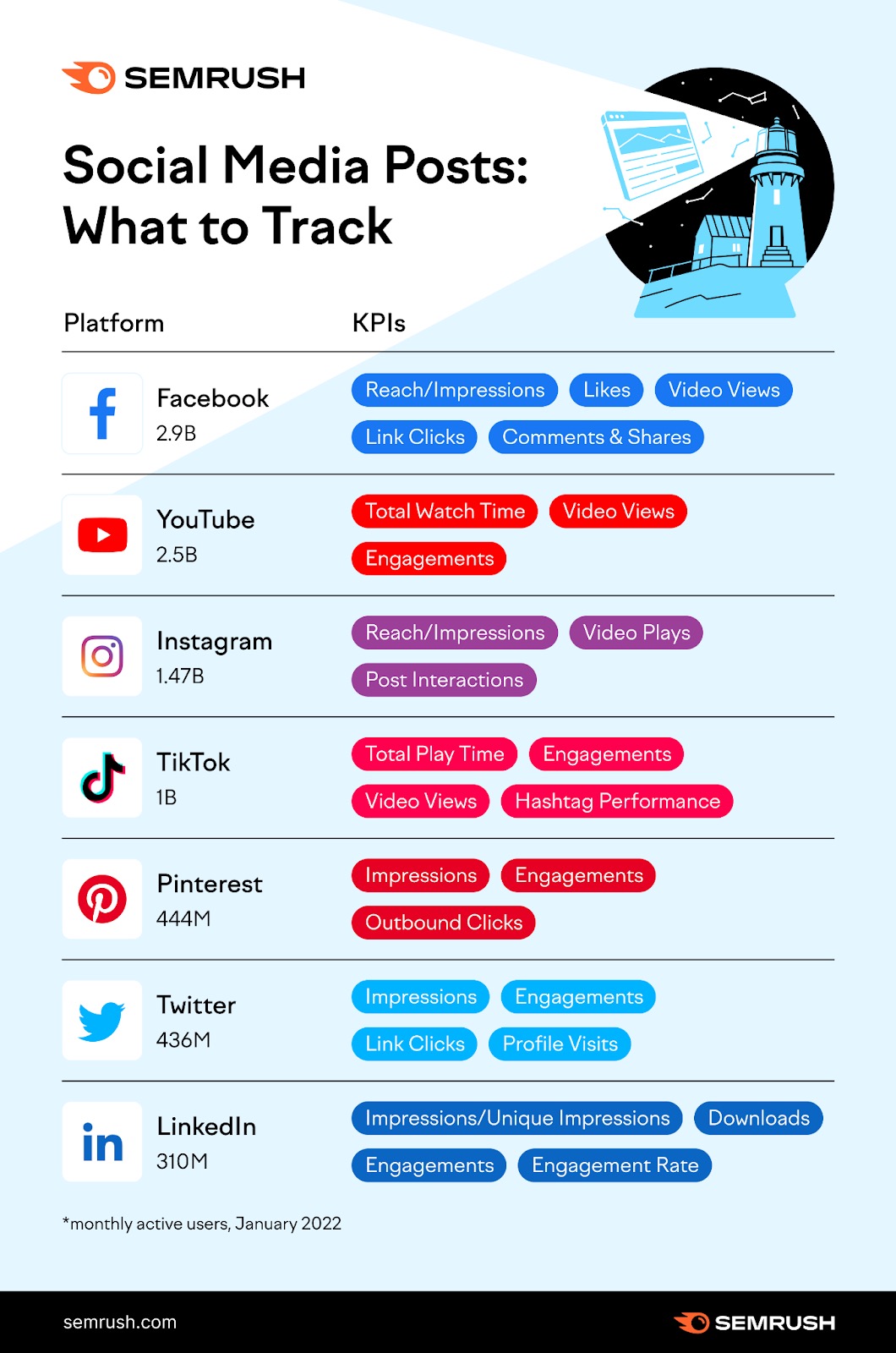
The Bottom Line
To achieve social media success, you must closely monitor the metrics that meet your business goals.
If you want to attract more visitors to your digital domain, conversion KPIs should be on the menu. But if you’re hoping to establish your brand as a force to be reckoned with, then your focus should be on the appetizing duo of reach and impressions.
Want to combine powerful collaboration and approval automation with handy engagement tracking capabilities? Try Gain for free today!

